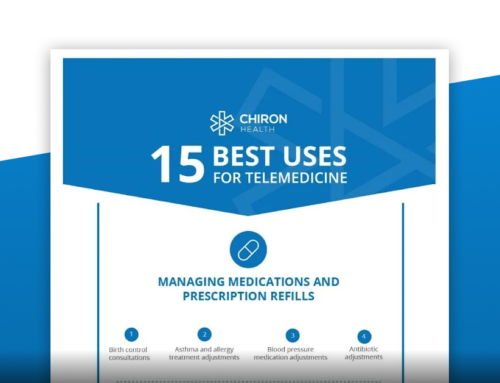The public comment window on the proposed 2021 Medicare Physician Fee Schedule Rule is just days away. Commonly known as the Proposed Rule, the measure includes key updates to the 2020 version. Some provisions still require clarification, so providers are encouraged to reach out to the Centers for Medicare & Medicare Services (CMS) before Sept. 30.
The measure seeks to balance technological advancements with restrictions imposed by the Covid-19 pandemic. The goal is to increase patient accessibility, healthcare quality and affordability, and innovation through remote patient monitoring (RPM).
Here are the top ten most important questions and the latest answers about Medicare remote patient monitoring.
Question 1: What is remote patient monitoring?
RPM is a branch of telehealth that allows physicians and other providers to monitor a patient’s health remotely. It is considered an effective way to keep patients with both chronic and acute conditions safely at home, especially during the Covid-19 public health emergency.
Question 2: What are proposed changes to remote patient monitoring?
The proposed patient monitoring rule includes proposals and clarifications on how CMS interprets RPM service rules. It expands interactive monitoring from patients with chronic illnesses to those with acute conditions.
Question 3: What are RPM monitoring and management codes, and how do they overlap?
CMS has provided guidance on an “order of events” for an RPM episode of care.
- CPT code 99453 reimburses for work associated with onboarding and educating a patient add setting up equipment by physician or clinical staff
- Code 99454 reimburses for providing the patient with a remote monitoring device for a 30-day period
- Code 99457 reimburses for clinical staff time related to monitoring physiologic parameters (weight blood pressure, pulse oximetry and respirator flow rate, for example). This values 20 minutes per calendar month
- Code 99458, an add-on to 99457, reimburses for each additional 20 minutes per month of interactive management
- CPT code 99091 focuses on analysis and interpretation of remotely collected physiological data in a 30-day period by a physician or other qualified health professional
CMS has not yet determined which codes can be billed concurrently or sequentially.
Question 4: What does “interactive communication” with a patient mean?
The 2021 Proposed Rule has published guidance on the scope of RPM as it relates to interactive communication. CMS states that codes 99457 and 99458 may be satisfied by at least 20 minutes of synchronous, real-time, two-way audio or audio-video interaction between provider and patient. Unless otherwise specifically stated, this type of interaction is equivalent to “face-to-face” time. The new clarification mandates at least 20 minutes per month of direct patient communication, as opposed to 20 minutes of total RPM service, such as reviewing and analyzing RPM data. This proposal differs from policies related to other services such as chronic care management. Advocacy groups such as the AMA Digital Payment advisory group will be watching to see if further clarification is needed during the comment period that ends Sept. 30.
Question 5: Can RPM be used with new and established patients alike?
As long as the public health emergency continues, providers can remotely monitor patients without having first conducted a new patient evaluation and management (E/M) visit. The original proposed patient monitoring rule for 2021 was limited to established patients – those with whom the physician already had a valid doctor-patient relationship, During the public health emergency, however, physicians may use real-time audio-video communication to satisfy the face-to-face aspect of an E/M service (CPT Codes 99201-99205) in its Medicare-covered telehealth services.
Question 5: Who can order and bill for RPM services?
Remote patient monitoring services can only be ordered and billed by physicians or practitioners eligible to bill Medicare for evaluation and management services.
Question 7: Who can furnish RMP services and obtain consent?
CPT code 99091—collection and interpretation of physiologic data – is limited to physicians or other qualified healthcare professionals. The 2021 Proposed Rule, however, allows both clinical staff and non-clinical employees such as contractors to provide services within CPT codes 99453 and 99454 under the billing practitioner’s general supervision.
CPT codes 99457 and 99458, which address duration of interactive communication during a given calendar month, can be furnished by a physician, other qualified healthcare professional, or by clinical staff under physician supervision. Code 99458, the newest CPT, specifically addresses patients who need an extra 20 minutes of RPM in a month.
Patient consent is required for code 99091. The 2021 Proposed Rule is also likely to require patient consent for CPT codes 99453, 99454 and 99457 at the time services are provided. That consent can be obtained by qualified healthcare professionals or those serving under their auspices. CMS has not addressed the issue of a permanent waiver of co-payment for remote patient monitoring.
Question 8: What type of RPM devices qualify for Medicare purposes?
The most recent CPT professional code book describes an RPM device as “a medical device as defined by the FDA,” as outlined in section 201(h) of the Federal, Food, Drug and Cosmetic Act. It does not mandate that such devices be FDA-cleared or approved. CMS states that the device should automatically collect and transmit physiologic data that is reasonable and necessary to render a diagnosis and prescribe treatment.
Question 9: How many days per month must the RPM device monitor?
To bill for CPT codes 99453 and 99454, monitoring must include collection of at least 16 days of data in a 30-day period. This applies whether the patient is furnished with one or multiple medical devices. Specifically, CPT 99453 can be billed only once per period of care, defined as “beginning when the remote physiologic monitoring service is initiated and ends with attainment of targeted treatment goals.”
Question 10: What are RPM practice expense codes?
Two practice expense codes are related to one or more medical devices supplied to the patient for remote monitoring purposes. Code 99453 reflects staff time spent on patient or caregiver instructions about using a device; code 99454 is valued to include a device itself and its programming. Devices for this purpose are considered equipment and therefore direct practice expense inputs. CMS strongly recommends consulting a certified billing and coding professional for Medicare billing guidance on RPM devices. Check with your certified billing and coding professional for guidance.
Next Steps
With many stipulations not yet clarified or addressed, CMS is soliciting input from healthcare providers, virtual care companies and other interested in proposed changes to remote patient monitoring. Comments are due by 5 p.m., Sept. 30 via this link.
Comments may also be submitted via standard mail to Centers for Medicare & Medicaid Services, Department of Health and Human Services, Attention: CMS-1734-P, P.O. Box 8016, Baltimore, MD 21244-8016. Express overnight mail may be sent to Centers for Medicare & Medicaid Services, Department of Health and Human Services, Attention: CMS-1734-P, Mail Stop C4-26-05, 7500 Security Boulevard, Baltimore, MD 21244-1850.
SOURCES:
https://www.cms.gov/newsroom/fact-sheets/proposed-policy-payment-and-quality-provisions-changes-medicare-physician-fee-schedule-calendar-year-4
https://www.ama-assn.org/practice-management/digital/digital-medicine-payment-advisory-group





